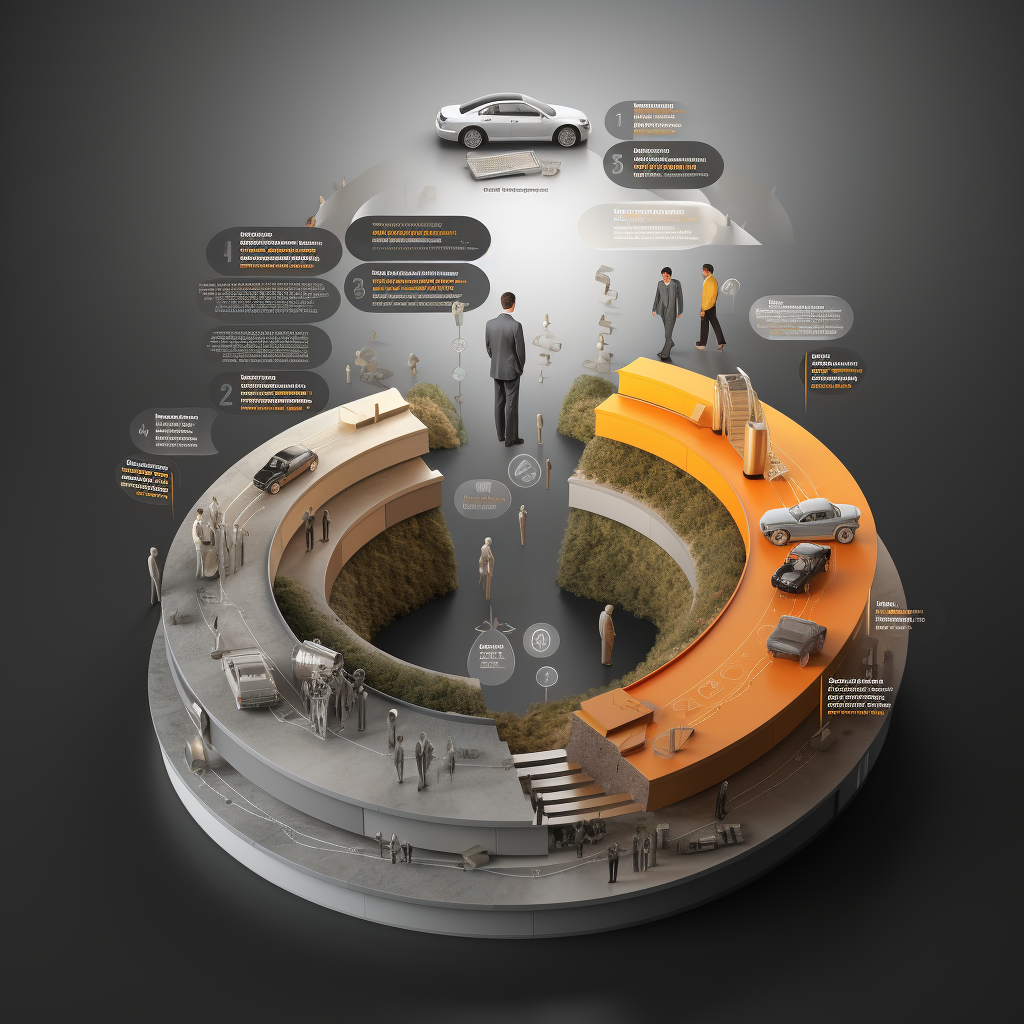If you want to acquire more leads, increase sales, and boost conversions, you need a content strategy mapped to the different stages of the buyer’s journey. With over 4 billion internet users, content is key for reaching your audience online. From videos to blogs to visuals, content helps leads learn about your business, products, and services. It also positions your brand as an expert.
Quality content delivers real results. It can generate up to 3x more leads than paid search alone. Just over half of users are more likely to buy a product after viewing related video content. So investing in content marketing brings measurable value.
The buyer’s journey has 3 main stages:
Awareness Stage
In the awareness stage, the lead realizes they have a problem or need. They start gathering general information related to their issue. An operations manager may see his workplace needs more organization, but doesn’t know the right solution yet.
Consideration Stage
In the consideration stage, leads better understand their problem and research potential solutions. They aren’t ready to buy yet. They need help understanding the best option.
Decision Stage
In the decision stage, leads are closer to making a purchase. They have researched their problem and potential solutions. Now they look for final details on why they should choose a specific product or service. Their decision may involve both logical and emotional factors.
An example buyer’s journey is getting medical treatment. You realize you have a sore throat. Research shows it’s strep throat. In the consideration stage, you explore options to relieve the pain and symptoms. In the decision stage, you choose the best solution for you.
Another example of a buyer’s journey is planning a vacation. You decide you want to visit somewhere warm. You research hot countries in Europe in October. You consider options like Spain, Italy, and France. Finally, you decide on Spain based on your needs and budget.
Mapping Content to Each Buyer’s Journey Stage
To create content that resonates at each stage of the buyer’s journey, understand the language prospects use in searches. Their word choice differs based on the stage.
Awareness Stage Keywords:
What, Where, How, Who, Why, Improve, Troubleshoot, Resolve
Consideration Stage Keywords:
Reviews, Best, Types, Which, Service, Solution
Decision Stage Keywords:
Buy, Make Appointment, Choose Brand, Deals, Discount Code, Book, Test it out
Use these keywords to plan content that answers questions appropriately at each stage.
Types of Content for Each Buyer’s Journey Stage
The content you create should align to where leads are in their journey. Tailor your content strategy and types to guide leads through each stage effectively.
Awareness Stage Content
In the awareness stage, leads are researching and gathering information. Content should focus on educating them, not selling.
Relevant content types include:
-
Blog posts - Longer articles answering questions, providing tips, explaining key concepts
-
Social media posts - Bite-sized content directing to blog posts, videos, etc.
-
Videos - Short, engaging videos explaining top-level concepts
-
Infographics - Visual representations of data, stats, processes
-
Images - Photos, illustrations, memes to grab attention and convey messages
-
Podcasts - Audio discussions of industry topics and issues
-
Quizzes - Interactive content to test knowledge
-
Checklists - Simplified action steps and guides
-
eBooks - Long-form guides covering topics extensively
Use keywords like “what is [topic]”, “how to [do something]”, “beginner’s guide to [concept]”, etc. Avoid heavy selling language.
Consideration Stage Content
In the consideration stage, leads are evaluating potential solutions. Content should help them analyze and compare options.
Effective content includes:
-
Comparison articles - Outline product/service features side-by-side
-
Webinars - Discuss and demo products/services
-
Product guides - Breakdowns of offerings, features, pricing
-
Quizzes - Help leads identify best fits based on needs
-
Calculators - Estimate costs, ROI, metrics of solutions
-
Review articles - Curated expert and user reviews
-
FAQ lists - Answers to common buyer questions
-
Interactive content - Product configurators, ROI calculators
Use comparison keywords like “vs”, “or”, and “best”. Focus on product/service differences.
Decision Stage Content
In the decision stage, content should convince leads your solution is the right choice.
Impactful content types:
-
Case studies - Stories of customer success and ROI
-
Demos - Walkthroughs showcasing product/service benefits
-
ROI calculators - Estimate potential return on investment
-
Product pages - Detailed information about offerings
-
Reviews and testimonials - Social proof from happy customers
-
Free trial sign-up - Low barrier to test products/services
-
Pricing pages - Clear cost details and buying options
-
Shopping cart/checkout pages - Easy purchasing process
Keywords include “[brand] [product]”, “buy”, “pricing”, “discount”, etc. Reduce barriers to purchase.
Strategically mapping content to each buyer’s journey stage is crucial for moving leads to become customers. Let us know if you need help tailoring your content strategy and types to the awareness, consideration and decision stages.
Conclusion
Get started mapping your content to move leads through the buyer’s journey effectively. Quality, strategic content is key for inbound marketing success. Use keyword research tools to guide your content topics and planning.
Or get help from experts. We can assist with your content strategy and execution. Don’t hesitate to contact us if you need guidance with mapping content to the buyer’s journey.
